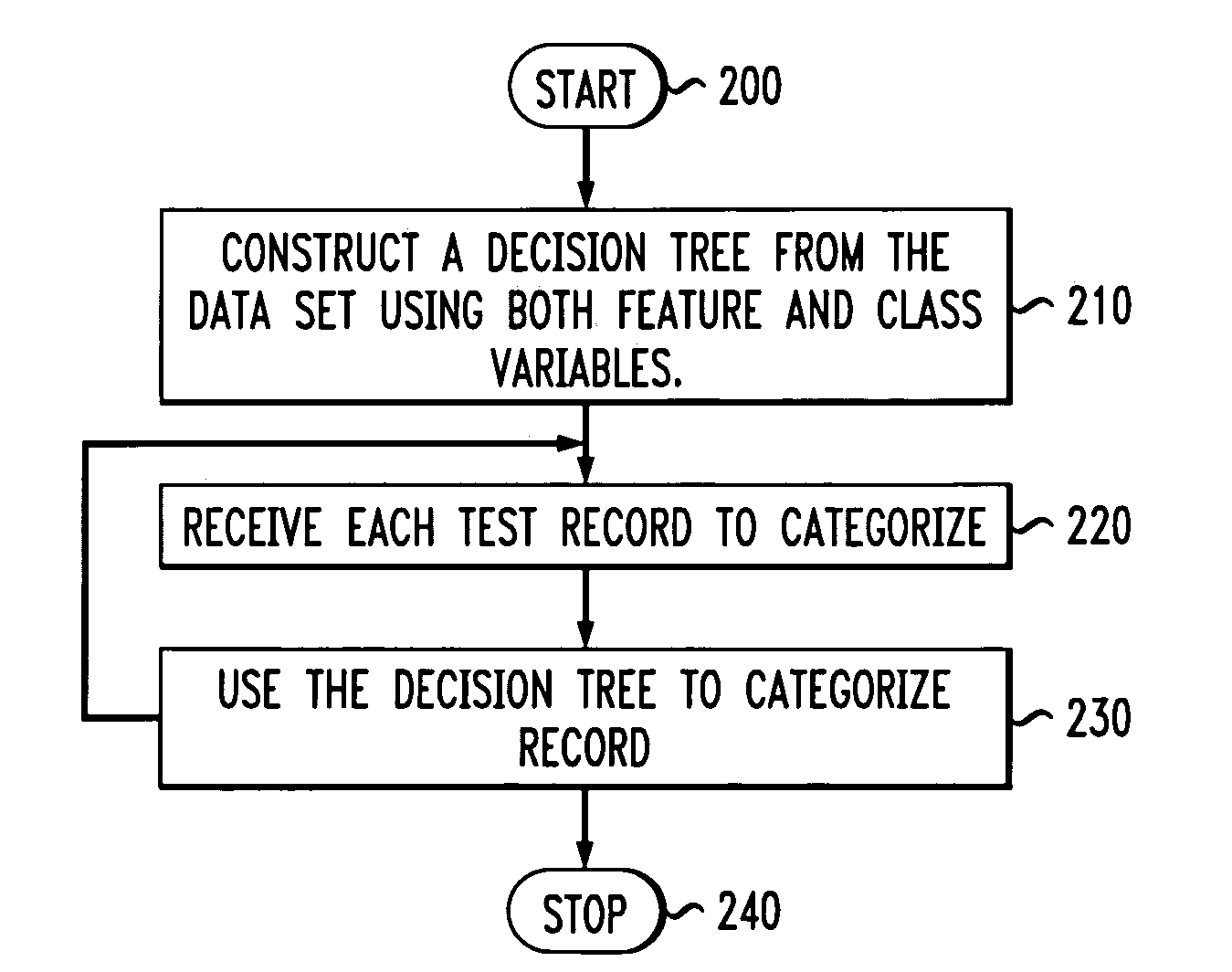Methods and apparatus for generating decision trees with discriminants and employing same in data classification
a decision tree and discriminant technology, applied in the field of data classification, can solve the problem of the greatest level of discriminatory power, and achieve the effect of the greatest amount of separation
- Summary
- Abstract
- Description
- Claims
- Application Information
AI Technical Summary
Benefits of technology
Problems solved by technology
Method used
Image
Examples
Embodiment Construction
[0021]The following description will illustrate the invention using an exemplary data processing system architecture. It should be understood, however, that the invention is not limited to use with any particular system architecture. The invention is instead more generally applicable to any data processing system in which it is desirable to perform supervised data classification via decision tree construction using linear discriminant analysis in order to achieve more effective classification or categorization results.
[0022]Referring initially to FIG. 1, an exemplary architecture suitable for employing the present invention is shown. As illustrated, an exemplary system comprises a computer system 10. The computer system 10 may be a separate system used to process input data. The computer system 10 may alternatively be part of a server which is coupled to multiple client devices via a network (e.g., Internet, private network, a local area network, or some other suitable network), whe...
PUM
 Login to View More
Login to View More Abstract
Description
Claims
Application Information
 Login to View More
Login to View More - R&D
- Intellectual Property
- Life Sciences
- Materials
- Tech Scout
- Unparalleled Data Quality
- Higher Quality Content
- 60% Fewer Hallucinations
Browse by: Latest US Patents, China's latest patents, Technical Efficacy Thesaurus, Application Domain, Technology Topic, Popular Technical Reports.
© 2025 PatSnap. All rights reserved.Legal|Privacy policy|Modern Slavery Act Transparency Statement|Sitemap|About US| Contact US: help@patsnap.com



